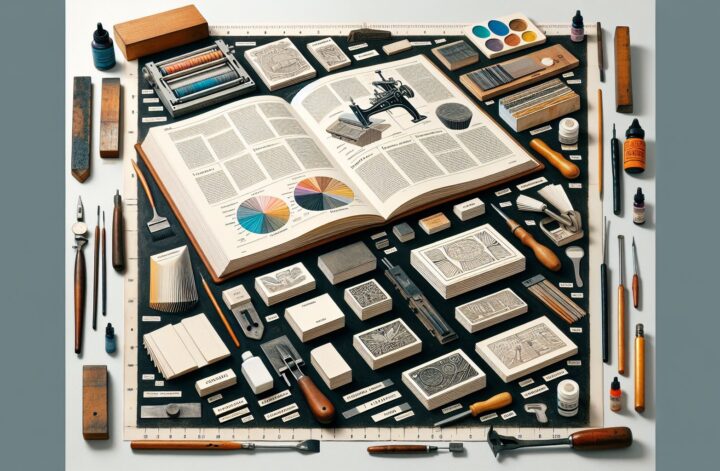In today’s digital age, we often overlook the importance of printed materials. Whether it’s a business card, a flyer, or a book, the materials used in printing play a vital role in the overall quality, durability, and aesthetic appeal of the final product. In this comprehensive guide, we will delve into the various printing materials available, their characteristics, and their best applications. So, let’s explore the world of printing materials!
Introduction to Printing Materials
Printing materials are the physical substances used in the printing process to transfer text, images, or graphics onto various surfaces. These materials significantly impact the quality and longevity of the printed product, making them a crucial consideration for any printing project. From paper to fabrics, plastics to metals, printing materials come in a wide range of options, each with its unique properties and intended uses.
The World of Paper Printing
Paper is perhaps the most commonly used material in printing. It is versatile, cost-effective, and widely available in various grades, sizes, and finishes. Here are some of the most popular paper types used in printing:
1. Bond Paper
Bond paper, also known as uncoated or writing paper, is a common choice for everyday printing needs. It offers good opacity, allowing printing on both sides without show-through, and is ideal for documents, letters, and photocopies.
2. Glossy Paper
Glossy paper features a shiny, reflective coating that enhances vibrant colors and sharp details in printed images. It is commonly used for brochures, flyers, and high-quality photo prints due to its ability to make colors stand out.
3. Matte Paper
Matte paper has a non-glossy, smooth surface that reduces glare and provides a more subdued look. It is ideal for applications such as professional documents, art prints, and photography where a sophisticated, elegant finish is desired.
4. Recycled Paper
As sustainability becomes increasingly important, recycled paper has gained popularity. It is made from post-consumer waste, reducing the impact on the environment. Recycled paper comes in various grades and finishes, making it a suitable choice for eco-friendly printing projects.
Beyond Paper: Exploring Alternative Printing Materials
While paper is a versatile and widely used printing material, various alternatives cater to specific needs and applications. Let’s dive into some other popular materials used in printing:
1. Vinyl
Vinyl is a synthetic material that offers excellent durability and weather resistance. It is commonly used for outdoor signs, banners, vehicle wraps, and stickers. Vinyl can withstand various weather conditions, making it ideal for long-term use.
2. Canvas
Canvas is a fabric material often associated with art prints and high-quality reproductions. It offers a textured surface that adds depth and a unique tactile feel to printed images. Canvas prints are commonly stretched over wooden frames for a professional and artistic appearance.
3. Plastic
Plastic materials, such as polypropylene and PVC, are commonly used for printing applications that require water-resistance or durability. Plastic printing finds its applications in product labels, ID cards, and packaging materials. These materials are also available in transparent or translucent variations, allowing for creative possibilities.
4. Metal
Metal printing adds a touch of elegance and durability to any project. Aluminum and stainless steel are commonly used for metal prints, and they provide a sleek, modern look. Metal prints have excellent color vibrancy and durability, making them suitable for displaying photographs or creating unique signage.
Choosing the Right Printing Material for Your Project
With a wide variety of printing materials available, it can be challenging to select the most suitable option for your specific printing project. Here are some factors to consider when making your decision:
1. Intended Use
Consider the purpose of your printed materials. Are they meant for single-use applications, such as event flyers, or do they need to withstand long-term use, such as outdoor signage? Understanding the intended use will help determine the required durability, weather-resistance, and longevity of the chosen material.
2. Aesthetic Requirements
The visual appeal of printed materials is crucial to grab attention and convey the desired message effectively. Consider the aesthetic requirements of your project, such as the desired finish, texture, and color vibrancy. Certain materials, like glossy paper or metal, offer a more eye-catching appearance than standard options like bond paper.
3. Sustainability Considerations
As sustainability gains importance, choosing eco-friendly printing materials can be a responsible choice. Look for options like recycled paper or biodegradable plastics to reduce the environmental impact of your printing project.
4. Budget Constraints
Lastly, it’s essential to consider your budget when selecting printing materials. Some materials, such as specialty papers or metal, may be more expensive than standard options. Ensure the chosen material aligns with your budget while meeting your project’s requirements.
Conclusion
Printing materials are a crucial aspect of any printing project. From paper to vinyl, canvas to metal, each material offers distinct properties that cater to diverse needs and applications. By understanding the characteristics of different materials and considering factors like intended use, aesthetics, sustainability, and budget, you can select the most suitable material for your printing project. So the next time you embark on a print job, remember to explore the wide variety of printing materials available to enhance the quality, durability, and visual impact of your creations!

